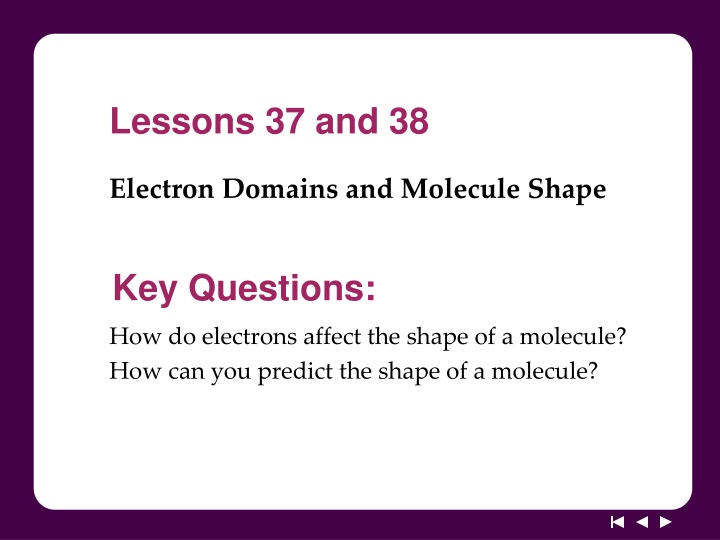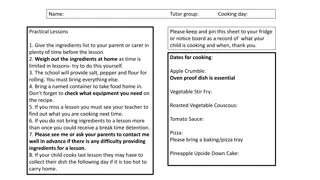
Electron Domains and Molecule Shapes
Explore how electrons influence molecule shapes, predict molecular structures, and learn about electron domain theory. Discover the impact of electron domains on molecular geometry through key questions, vocabulary, and discussion notes.
Download Presentation

Please find below an Image/Link to download the presentation.
The content on the website is provided AS IS for your information and personal use only. It may not be sold, licensed, or shared on other websites without obtaining consent from the author. If you encounter any issues during the download, it is possible that the publisher has removed the file from their server.
You are allowed to download the files provided on this website for personal or commercial use, subject to the condition that they are used lawfully. All files are the property of their respective owners.
The content on the website is provided AS IS for your information and personal use only. It may not be sold, licensed, or shared on other websites without obtaining consent from the author.
E N D
Presentation Transcript
Lessons 37 and 38 Electron Domains and Molecule Shape Key Questions: How do electrons affect the shape of a molecule? How can you predict the shape of a molecule?
Entry Task The image below shows a ball-and-stick model of an ethanol molecule. Predict why the bonds coming from the oxygen atom (red) are angled.
You will be able to: determine the shapes of small molecules explain how lone pairs of electrons influence molecular shape describe electron domain theory and how it relates to molecular shape
Vocabulary: Electron domains Electron domain: The space occupied by valence electrons in a molecule, either a bonded pair(s) or a lone pair. Electron domains affect the overall shape of a molecule. Electron domain theory: The idea that every electron domain in a molecule is as far as possible from every other electron domain in that molecule.
Discussion Notes (cont.) Even though the molecules you created today have different numbers of atoms, they all have a similar underlying shape. CH4 NH3 H2O HF Ne Lone-pair paddles
Discussion Notes (cont.) Most molecular models do not include lone pair paddles in their representations.
Vocabulary: Tetrahedral shape The shape around an atom with four bonded pairs of electrons. This is the shape of a methane molecule (CH4).
Vocabulary: Pyramidal shape Pyramidal shape: The shape around an atom with one lone pair of electrons. This is the shape of an ammonia molecule.
Vocabulary: Bent shape Bent shape: The shape around an atom with two lone pairs of electrons. This is the characteristic shape of a water molecule.
Vocabulary: Linear shape A geometric shape found in small molecules with two electron domains surrounding the central atom. carbon dioxide (CO2) oxygen (O2)
Vocabulary: Trigonal Planar shape A flat triangular shape found in small molecules with three electron domains surrounding the central atom.
More atoms = More Shapes The more atoms in a molecule, the more combinations of shapes you might see together.
How do electrons affect the shape of a molecule? Electron domains represent the space occupied by bonded electrons or a lone pair. Electron domains are located as far apart from one another as possible. This is referred to as electron domain theory. The three-dimensional shape of a molecule is determined by the valence electrons, both bonding electrons and lone pairs.
How can you predict the shape of a molecule? Drawing the Lewis dot structure of a molecule allows us to predict its three- dimensional shape. The presence of double or triple bonds changes the number of electron domains around an atom, which in turn affects the overall shape of the molecule. The shape of large molecules is determined by the smaller shapes around individual atoms.






















